Battling salt water on the Mississippi, New Orleans region faces its next challenge
For months, Louisiana oyster farmer Mitch Jurisich, Jr. watched the Mississippi as an invisible surge of Gulf of Mexico salt water crept up the tail end of the river, twisting along levees through bayous and marshes toward New Orleans.
Since June, the wedge-shaped layer of dense salt water has been pushing upstream at the bottom of a river so weakened by drought that it cannot keep the ocean water at sea.
And that has caused three months of woes in Jurisich’s home of Plaquemines Parish.
Compromised water plants that draw from the river. Constant trips for bottled water. Shrimp boat docks forced to truck in ice. Salty showers. Health concerns. And worries that it will only further fuel coastal erosion.
“It’s been a nightmare,” said Jurisich, 60, who also serves as a parish councilman and operates the Ponderosa Oyster Bar & Grill in the tiny town of Empire, Louisiana.
Now, the threat of the saltwater incursion to municipal drinking water in New Orleans has slowed, giving more time to the U.S. Army Corps of Engineers’ and Louisiana officials’ efforts to combat it. Those efforts include installing reverse-osmosis filters and running new pipes that can bring fresher water into New Orleans.
In Plaquemines, filters and Army Corps barges with millions of gallons of fresh water are reaching water treatment intake sites.

Officials now predict the wedge could reach a New Orleans area drinking water intake by late November, instead of late October, as had been feared -- if it arrives at all. Even then, they said, salt levels there may not reach thresholds that prompt health warnings.
But amid uncertainties about longer-term weather, it’s not clear when the low-water river will see enough of a surge of freshwater to push the saltwater back to sea, which officials have said could take several months.
Several more days of rain are now forecast in October. But because the forecast could change again, officials are pushing ahead with stopgap measures to ensure fresh water supply.
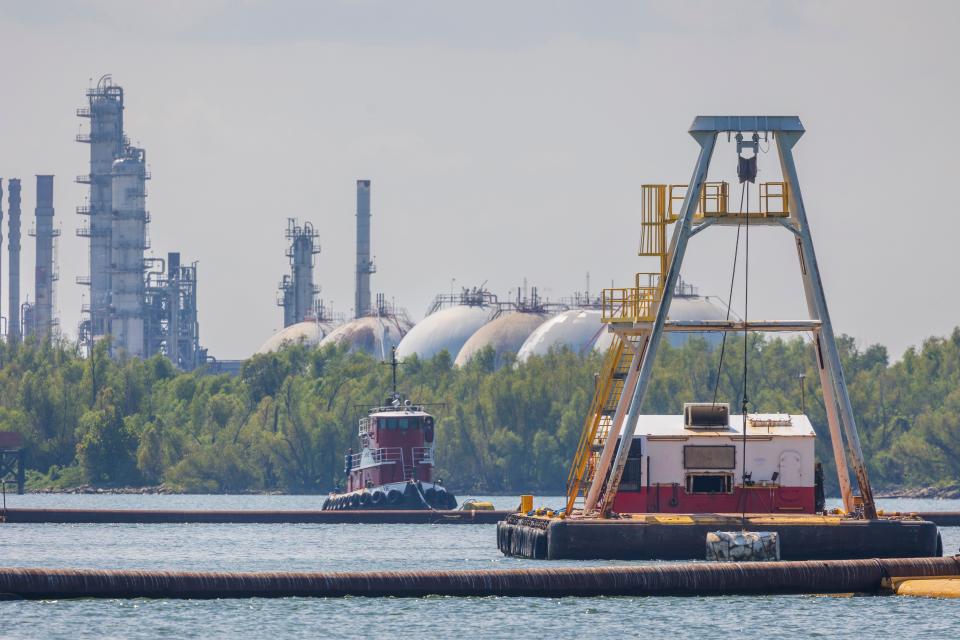
At her small historic hotel, located a few miles from the city’s famed French Quarter, longtime New Orleans resident Liz Creel, 57, has still been stockpiling water and installing her own reverse-osmosis desalinator – hoping to reassure guests and keep them from canceling stays.
Despite the saltwater slowdown, she’s pressing ahead with that strategy given uncertainties.
“We need to put ourselves in a position where we can roll with whatever comes up the river or through the water pipes,” she told USA TODAY on Saturday.
Saltwater wedge: Why is it encroaching on freshwater river?
Saltwater intrusion occurs because the river bottom between Natchez, Miss., and the Gulf of Mexico is below sea level, according to the Corps of Engineers.
Normally, the Mississippi River flow fills the river channel and keeps salt water out. But this year, with extremely low water levels and river flow, denser salt water has been able to slip upriver beneath the less dense freshwater flowing downstream.
Experts blame drought in parts of the U.S. for causing critically low water conditions on the Mississippi River in back-to-back years.
Last year, about 40 days of critically low water in parts of the Mississippi grounded barges, stalled traffic and blocked river ports at the height of harvest season, causing an estimated $20 billion in losses, according to AccuWeather.
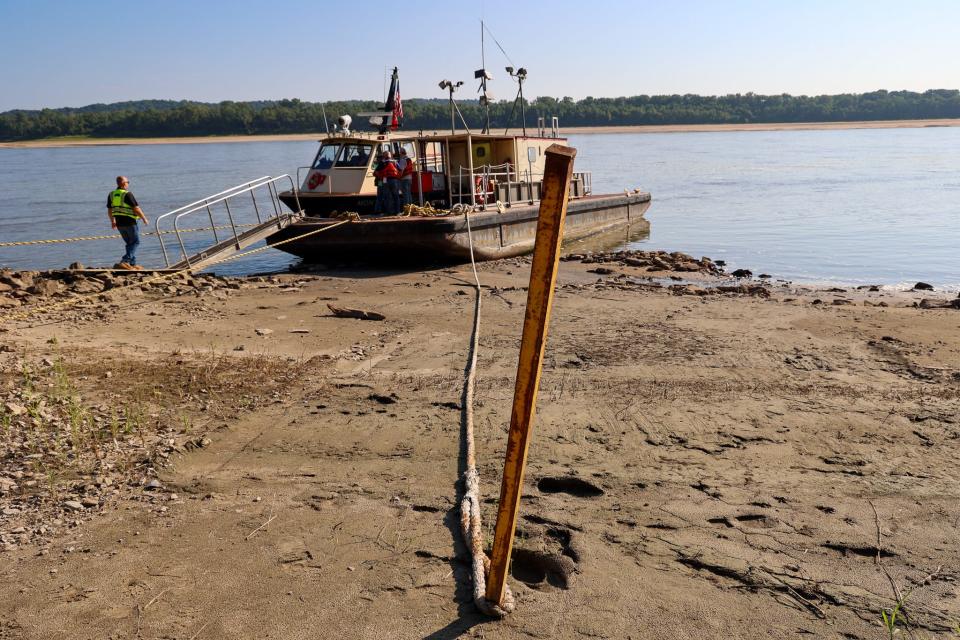
Drought in the United States expanded and intensified this summer, fueled by both a lack of precipitation and extreme heat, according to the National Integrated Drought Information System.
That included areas of the Midwest that drain into the Ohio and Missouri rivers and help determine the Mississippi’s water flows.
Saltwater has moved up the Mississippi before. The Corps of Engineers built an underwater sill to try to keep seawater from pushing upstream four times before this year: iIn 1988, 1999, 2012 and last year in 2022.
But this time the incursion has been expected to last longer than in the past.
One reason is that the repeat low- water years on the river have amplified the fallout of drought conditions, said Mark Svoboda, director of the National Drought Mitigation Center at the University of Nebraska-Lincoln.
There's been less time for the system to recover than in years when droughts were followed by wet, rainy years.
“Last year we had the same issue. But it came much later and it didn't last as long,” said Jurisich, a third-generation fisherman in the area. “This is the worst yet.”
Why is salt water in the Mississippi a problem?
In and around the small towns that dot either bank of the Mississippi near the coast, salt level readings at water plants shot up in July.
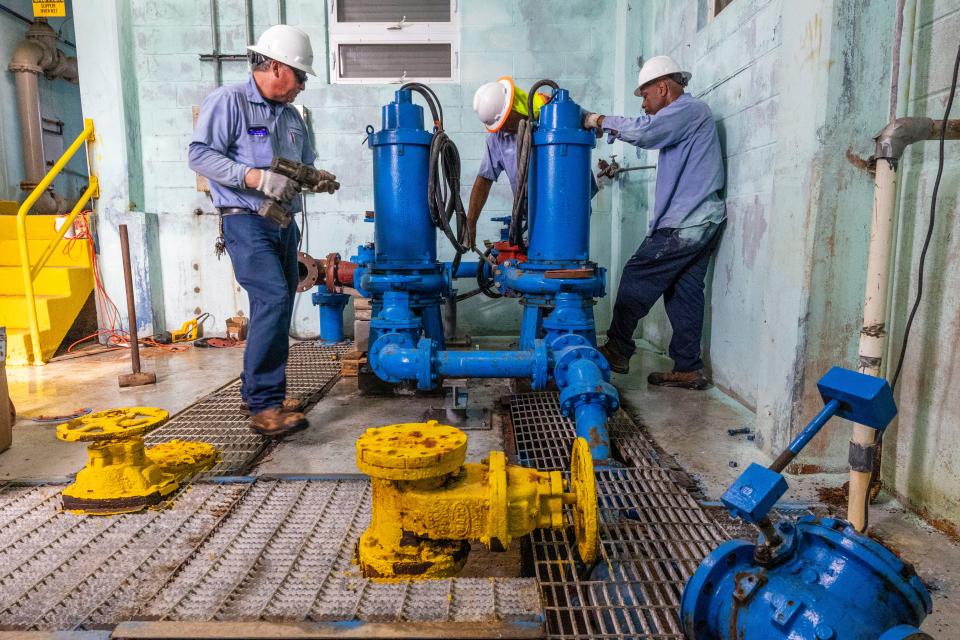
Residents in south Plaquemines Parish faced weeks where tap water salt levels were 1,600 parts per million, more than six times higher than when the Environmental Protection Agency says the water starts to taste salty, according to New Orleans Public Radio.
Officials have warned the water is unsafe to drink for people with kidney problems, hypertension, infants and pregnant women. And the salt can’t be removed through boiling or common water filters.
“When you're brushing your teeth, you can taste the salt,” Jurisich said. “Couldn't use the water for cooking. Definitely couldn't use it for drinking.”
For many residents that has meant repeat trips to fire stations, schools and community centers to pick up bottled water, delivered three times a week by semi-truck.
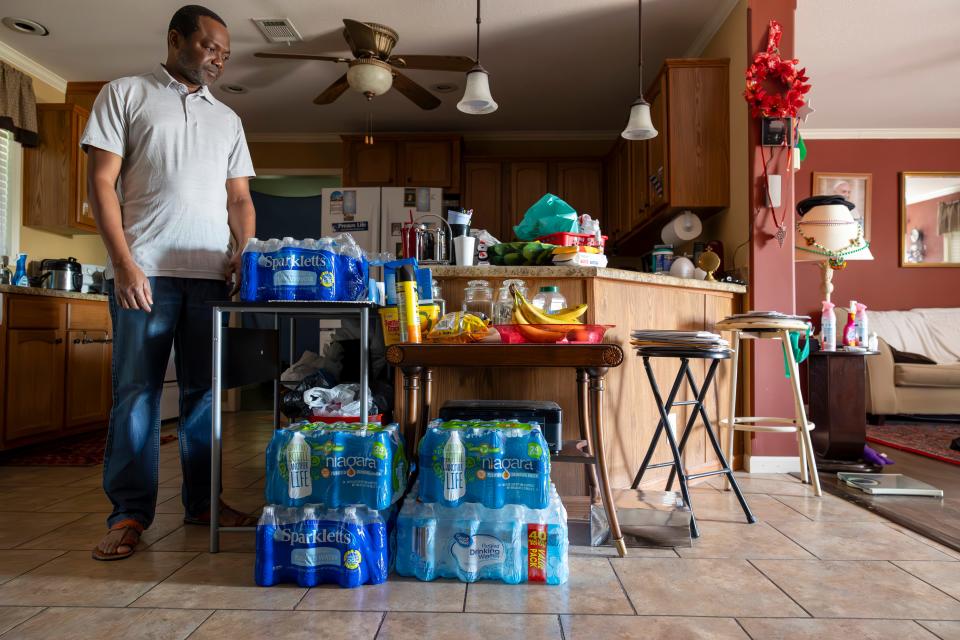
Another concern is that saltwater can also corrode pipes and appliances, such as hot water heaters, dishwashers or ice makers.
In New Orleans, city officials have cited concerns it could damage the city’s thousands of lead drinking water pipes, potentially leaching chemicals into water.
Agriculture can also be impacted. Louisiana State University’s AgCenter said a prolonged incursion could build salt levels in the soil over time, though it would eventually be flushed out by rains.
The group recommended that commercial nurseries consider small desalination units, but noted livestock tend to have higher salt tolerances than humans.
For the large fishing fleet near the coast, Jurisich said the salt incursion can upset the delicate balance of freshwater, saltwater and brackish water that supports a variety of fish.
He said that the longer that salt water intrudes in freshwater areas, the greater the chance it can kill marsh grasses that help keep erosion at bay.
“I think we're going to see some long-term effects from this that we're not even looking at right now,” he said.
What is the government doing to combat it?
The Corps of Engineers is now delivering barges of fresh water to Plaquemines, including to the Port Sulphur water treatment plant, where it will be used to dilute the water to safe levels to be treated.
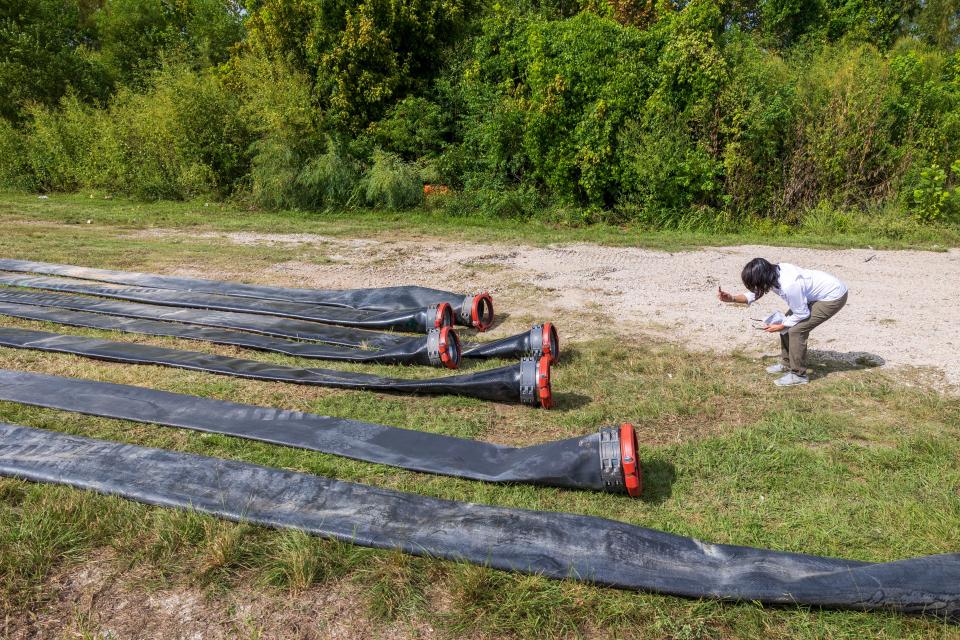
The Corps says it plans to deliver up to 36 million gallons of water each day to impacted facilities if needed, officials said.
In addition, Louisiana officials are installing reverse-osmosis filters at water treatment plants including at Pointe a la Hache, upstream from Empire, that officials said would lift the water advisories in some areas.
In New Orleans, work is underway on a temporary flexible pipeline to bring millions of gallons of fresh water to Jefferson Parish from an area with lower salinity. On the opposite bank, filters and water barges plan to be used to maintain safe tap water supplies.
Emergency officials are still planning locations to distribute bottled water if necessary, even though the threat to the city’s water has lessened.
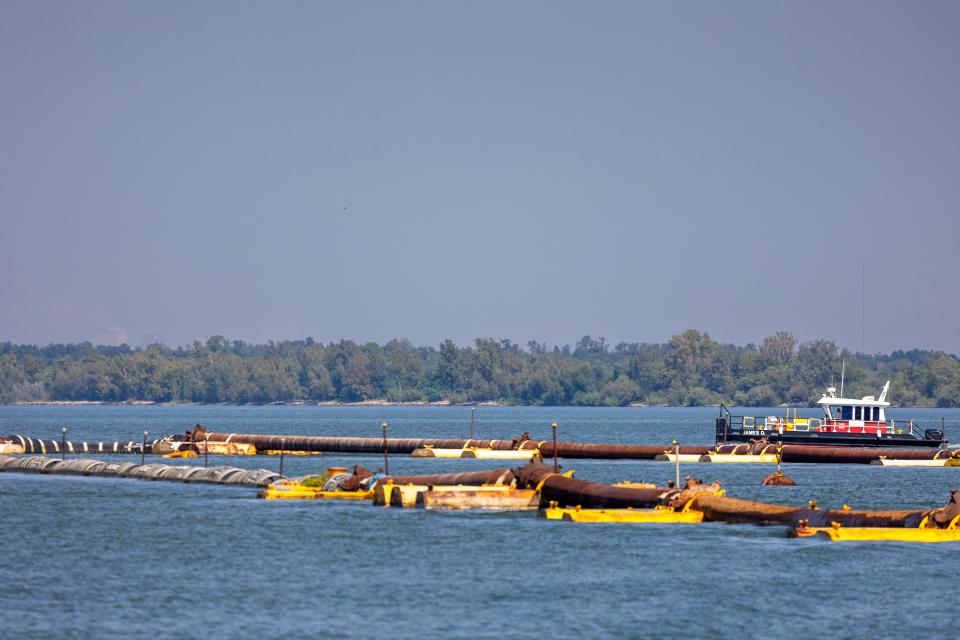
“We certainly don’t want to lose any time or get caught flat-footed if something were to change on us,” Jefferson Parish President Cynthia Lee Sheng said at a news conference Friday. “So we’re going to continue.”
One key reason for the slowdown is the U.S. Army Corps of Engineers’ work elevating the underwater earthen sill it built this summer. Officials had said it could delay the wedge for more than two weeks. Though still under construction, it worked better than expected, said Col. Cullen Jones, the New Orleans District commander.
Also helping hobble the saltwater’s push to New Orleans were river flows that did not dip as low as predicted in recent weeks. However, they are forecast to drop over the next two months, even with slightly more rain forecast in October
Jones said all that pushed back the estimated arrival of saltwater to intakes in Gretna, at New Orleans, to Nov. 26. Areas beyond that might not see significant impact. Salinity in the city may not reach above 250 parts per million, the level that triggers health warnings.
The New Orleans Sewerage and Water Board continues to tell residents that for now, water in the city is safe and that residents do not need to change usage.
Ron Spooner, interim general sSuperintendent of the water board, said the delay would give more time to prepare for measures it hopefully won’t have to use.
“We’re all thankful that it’s not as dire as we thought it would be,” said Louisiana State Health Officer Dr. Joseph Kanter.
What’s next?
Creel said her city – home to 10 generations of her family – has been through too many hurricanes and other disasters to get overly worried.
She was around in 1988, the last time a saltwater wedge came close to threatening the city’s water supplies. This time, some social media posters have jokingly called it the “saltpocalypse.”

At the 1880s-era Park View Historic Hotel, which she and her husband have owned for 15 years, she has purchased plenty of bottled water and is still working to install a costly desalination machine and ultra violet light filtration to assure guests of water safety.
Some people have canceled reservations for later this year, perhaps, she said, knowing the issue has been expected to stick around for several months. That was a worry she said she voiced to a doorman recently at a store picking up extra water.
“Ms. Liz, you’re not panicking, are you?” he asked.
“I'm not panicking,” she said. “I'm worried because I'm worried about my business.”
The conditions could still persist until the new year given that the fall months are the region's driest. And it can take 90 days for freshwater to travel from the upper Midwest downriver to southern Louisiana.
While New Orleans might see less of an impact than expected, the Corps said in a statement that for now, the saltwater will continue to be a presence in Plaquemines Parish.
However long it lasts, Jurisich hopes this fall’s incursion leads to more lasting solutions at a time when the frequency of extreme weather seems to be increasing.
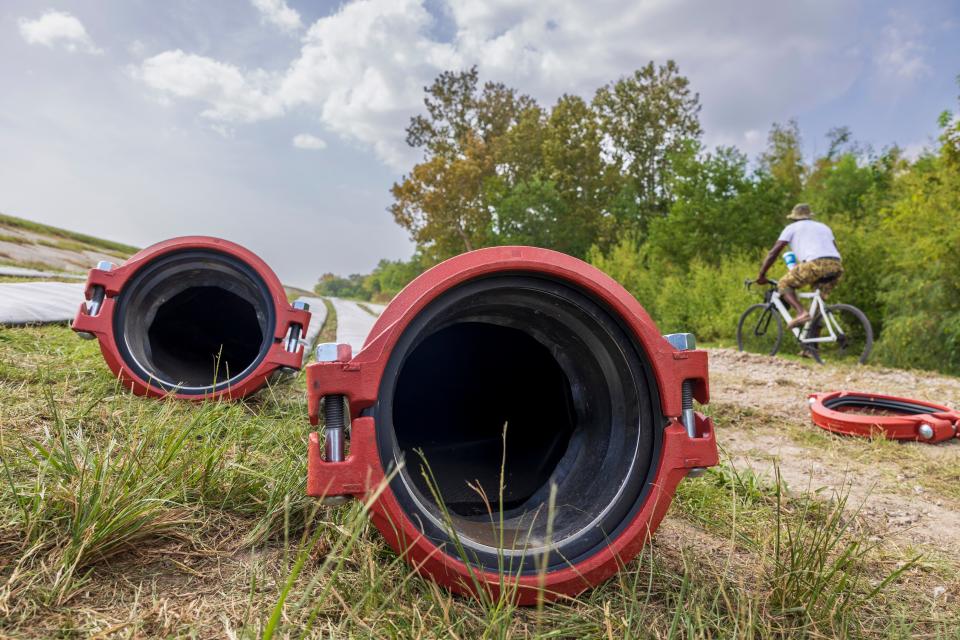
He said that should include bolstering the desalination capacity of water treatment plants and closing breaches in the river levee caused by erosion – which he argues slows the Mississippi’s flow and allows saltwater to more easily enter freshwater areas.
A Tulane University study this year found that water losses from the main Mississippi River channel from New Orleans to the Gulf have increased by 25% since 2004 due in part to bank failures.
Collin Arnold, New Orleans' director of homeland security and emergency preparedness, said local, state and federal officials will explore permanent solutions to mitigate such incursions. That could include new pipelines and desalination plants.
“I think we all believe that we will face this again at some point,” he said. “I think there will be a lot of discussion, a lot of science involved and engineering, about how we deal with this in the future.”
Svoboda said such areas are indeed likely to face increasing instances of saltwater intrusion amid the predicted rise of sea levels.
“That's going to be a constant battle, especially on drought years when you don't have fresh water flow,” he said.
This article originally appeared on USA TODAY: Saltwater on Mississippi River: Will ‘wedge’ reach New Orleans?

